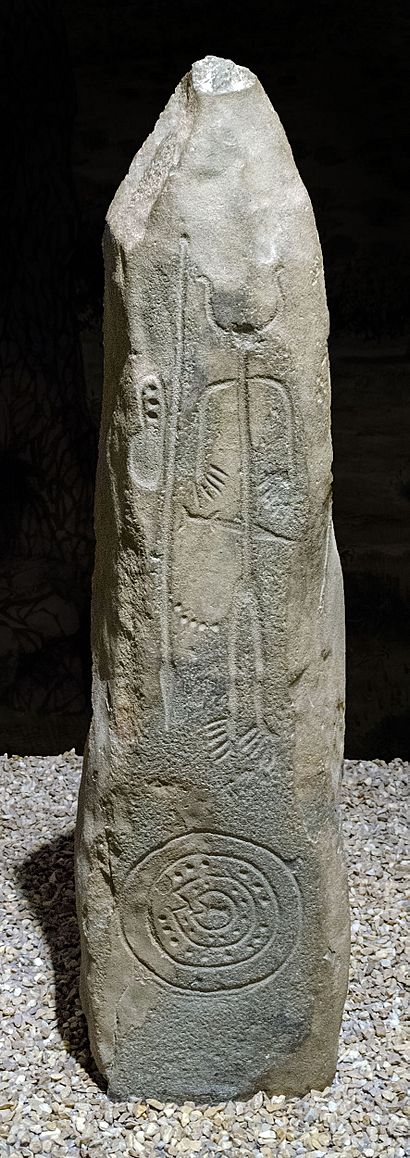Magacela stele facts for kids
Quick facts for kids Magacela stele |
|
|---|---|
| Spanish: Estela de Magacela | |
 |
|
| Year | c. 1100–800 BC |
| Medium | Slate |
| Dimensions | (142 x 35 x 32) cm |
| Location | National Archaeological Museum, Madrid, Spain |
The Magacela stele is an ancient stone slab. It was found in southwestern Iberia, which is a peninsula that includes Spain and Portugal. This special stone is made of slate. Experts believe it was created during the Late Bronze Age, around 1100 to 800 BC.
Today, you can see the Magacela stele at the National Archaeological Museum in Madrid, Spain. It is an important piece of history.
Discovering the Magacela Stele
For a long time, the Magacela stele was hidden. By the 1900s, it was being used as part of a wall. It was in an orchard in Magacela, a town in the Spanish province of Badajoz.
In 1950, the owner of the orchard, Juan Delgado Torres, found it. He took the stele to the town hall. This is how the ancient stone became known to everyone.
Later, the stele was given to a private collection. This collection belonged to Eduardo Ezquer Gabaldón in San Pedro de Mérida. Eventually, this amazing artifact became part of the collection at the National Archaeological Museum.
What the Magacela Stele Shows
The Magacela stele has carvings on its surface. These carvings show a human figure. It looks like a male warrior or a leader. This figure wears a helmet with very large horns.
Next to the figure, there are weapons. You can see an edged weapon and a spear. There is also an object that might be a handheld mirror. All these items point downwards. This suggests the stele was made for a funeral or burial. It was likely placed at a grave.
Below all these elements, there is a carved round shield. This shield is a common symbol found on similar ancient stones. It helps us understand the people who made the stele.
See also
 In Spanish: Estela de Magacela para niños
In Spanish: Estela de Magacela para niños

